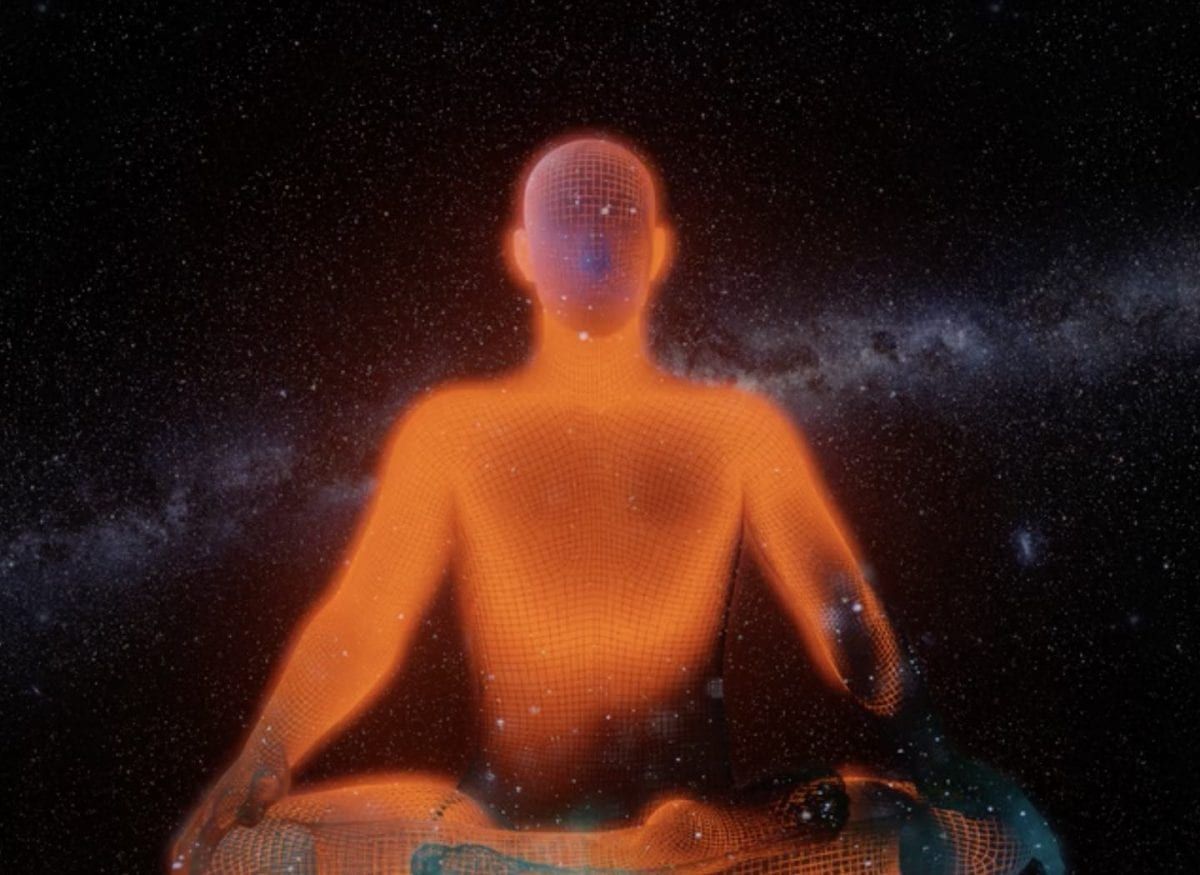In The Tibetan Book of Living and Dying by Sogyal Rinpoche, there is an interesting passage:
Without our familiar props, we are faced with just ourselves, a person we do not know, an unnerving stranger with whom we have been living all the time but we never really wanted to meet. Isn’t that why we have tried to fill every moment of time with noise and activity, however boring or trivial, to ensure that we are never left in silence with this stranger on our own?
I mentioned in one of my discourses and perhaps wrote in a book too that the word meditation in Tibetan means to familiarize oneself. When it comes to meditation, the contribution of Tibetan masters cannot be overstated; they combed religion out of meditation. In its purest form, they carefully eliminated, like weeds from grass, all the unearthly and unrealistic promises of rewards of intense meditation. And this is something I greatly appreciate. For, when we embark on the journey of meditation not expecting that we will fly or become tiny or levitate and all, our practice becomes pure and meaningful. Above all, it remains truthful and humble.
The other day, I was speaking to a wonderful life-coachee when he touched upon the subject of meditation. I have written on how to gauge your spiritual progress or the effects of meditation on you, but what about measuring your progress in meditation. In other words, if meditation was a skill (which it is), how would you know you are on the path to mastery? Well, let me share with you eight signs of progress in meditation based on my experience:
1. How long can you sit peacefully for?
As said the French philosopher, Blaise Pascal, “All of humanity’s problems stem from man’s inability to sit quietly in a room alone.”
When you sit down for meditation, for how long can you sit quietly, peacefully, without feeling jittery or restless? As you progress, this period increases limitlessly. And that’s regardless of the posture you might adopt. You could be sitting in a chair, on a couch, on an elephant, it doesn’t matter. The only condition is that you are not engaged in any external activity such as watching TV, reading a book, attending a course, or teaching in the WhatsApp university, etc. You are just sitting, either maintaining thoughtlessness or one-pointed concentration. Or even just sitting quietly.
2. How long can you hold your concentration for?
Sitting quietly will only take you so far because meditation without awareness is nothing more than glorified dullness. As you make progress in meditation, you are able to hold your concentration for much longer. In the beginning, it could be a few seconds but with time it turns into a few minutes. During the days of my peak practice, I could sit quietly and be still for as long as I needed to (the max I have done is 72 hours) and I could hold my concentration unflinchingly for up to ninety minutes. After that, there would be a flicker in my mind and I would reset my attention while maintaining my posture, of course. It was incredibly tiring too, if I may add. Had I persisted, I could have extended it, but my body and brain just gave up on me. I had been without food and water for three days and maintaining concentration consumed every ounce of energy in me. Besides, how much can you churn after all once you have gotten the butter from the cream? Bacche ki jaan loge kya?
One simple test is to put on your favorite song or a piece of music and pay attention to it. Could you concentrate throughout it? When you persist with the practice diligently, the span of concentration continues to elongate.
3. How long can you be thoughtless for?
It’s an incredible feeling, both unnerving and liberating when you are able to maintain the awareness of thoughtlessness for longer periods. Maintaining thoughtlessness is the most superior form of one-pointed concentration because now being still in your mind has become so natural to you that concentration has taken the form of ever-present mindfulness and you are aware that you have a mind but it is no longer rambling away. You have successfully tapped into supra-awareness. The reason it’s a bit unsettling at the beginning is that for the longest while you can remember, the mind’s always been talking.
The first time it happened to me, I had felt very uneasy. And then over the next couple of weeks, I learned to expect and absorb the feeling. A prolonged period of thoughtlessness has no substitute nor equivalent. It’s a feeling like no other. It brings a dramatic shift in your consciousness, it’s like you’ve moved from a tiny home in a noisy street into a magnificent palace on top of a cliff.
4. Can you pursue any chosen line of thought at will?
When thoughts and feelings overpower you, are you able to drop them and choose any other line of thought? Or simply put, are you able to shift your attention whenever you want? I cannot even begin to tell you how powerful this attainment is. Until it comes to you naturally by virtue of your practice, let me iterate three super-effective ways to bring your mind back to the present moment so you may shift your attention.
a. What am I doing right now? And then: what should I be doing right now?
b. Just stop whatever you are doing and say Hello to the voice in your head. Say, “Hello, you, yes, you, I’m talking to you. How are you doing? Do you hear me?” I wrote about this method many years ago on this platform and I had read it in a book that wasn’t even about meditation per se. (I can’t recall the name but may have mentioned it in one of the earlier posts).
Doing a and b above will still your mind and bring it into the present moment. You’ve lifted the attention successfully. Now it’s time to shift it, and to do so, ask yourself:
c. If I wasn’t thinking about this, what would I be thinking about?
At whatever stage of meditation you may be, this method of shifting your attention will never let you down. Try it any day.
5. How regular is your breathing?
It’s incredible how easily we forget the deep connection our breathing has with our mind. When we are angry, upset, sad, our breathing becomes shallow and irregular. The same happens in the event of rigorous physical activities. As you master meditation, your breathing becomes regular, almost rhythmic. That’s not to say that even when running on a treadmill, you’ll be breathing deep and slow. While experiencing other emotions and performing mental activities, however, your breathing will remain steady. A good meditator, a great meditator, and a supreme meditator equal steady, steadier, steadiest breathing respectively.
6. How are your reactions?
This one is pretty self-explanatory. You automatically react to things and situations more mindfully as you champion meditation. Visceral, knee-jerk, reactions give way to thoughtful responses. In doing so, you find yourself more compassionate and empathetic towards yourself and others. You don’t just blurt and blabber. Instead, you think through and understand the importance of your words. Even your spontaneity is mindful.
7. Are you able to affect the involuntary system of your body?
When you master points one through to five, you begin to gain control over your blood pressure, body temperature, heartbeat, pulse, and above all, your brain. If you want to activate any region of your brain and benefit from that energized region without performing the associated physical/motor activity, you can. You want to increase your body heat by half a degree or so, you can. You want to activate your solar plexus or thermal energy so you can survive in extreme cold, you can. You want to experience what death is like? Well, my friend, you can.
8. Do you experience a higher state of consciousness?
By a higher state of consciousness, I don’t mean that you begin to astral travel (though, it’s possible as a subjective experience). But that your perspective shifts and you rise above the pettiness of life. No power struggle, no covetousness, no jealousy, no anger, no pretense; believe me these are the higher states of consciousness. Superior intuition is an epiphenomenon of the mastery of meditation as is experiencing oneness with the universe.
To overcome the various hurdles of meditation and continually improve your practice, simply learn to balance between mental exertion and relaxation. You could also develop an internal mechanism to excel on the path. Think of this mechanism as the Israeli Iron Dome, a mobile all-weather air defense system that gets activated the moment it spots any missile or rocket threat in the air. Your mindfulness-powered iron-dome will get activated the moment any undesirable or discursive thought enters your consciousness. Here is how to build it:
i. Focus on your breath.
ii. Shift your attention (as mentioned in point 4 above).
iii. Engage in a different activity. (Don’t make the mistake of reasoning or talking your way out of your emotions. It’s futile. Just follow point ii.)
It doesn’t matter how challenging you find meditation, if you consider it purely as a matter of a skill and don’t give up, you are bound to reap the rewards. Just keep making steady progress. Fine, you can’t do it for 20 minutes, can you do it for five? Okay, you can’t do it every day, can you do it every other day, or even twice a week? Every quality minute you put into the practice of meditation will make you better at it.
A young woman approached Aristotle and said, “When should I start training my son?”
“How old is he?”
“Five years.”
“You’d better hurry home, lady,” Aristotle said. “You are already five years late.”
The good news is that when it comes to meditation, it’s never too late. The not-so-good news is that you haven’t another moment to waste. “Arise, awake, and stop not till the goal is reached,” as Vivekananda would say. Get on with it.
On a scale of 1-10, 10 being the highest, as you master meditation, your answer to these four questions will start sliding towards 10. They are:
1. How well do you know yourself? (dhyana)
2. How comfortable are you with yourself? (sehajata)
3. How stable is your mind? (kootastha)
4. How awakened are you? (stitha-prajna)
That’s the crux. I’ve given you the gist. The rest is commentary.
Peace.
Swami
A GOOD STORY
There were four members in a household. Everybody, Somebody, Anybody and Nobody. A bill was overdue. Everybody thought Somebody would do it. Anybody could have done it but Nobody did it.
Don't leave empty-handed, consider contributing.It's a good thing to do today.









Comments & Discussion
276 COMMENTS
Please login to read members' comments and participate in the discussion.